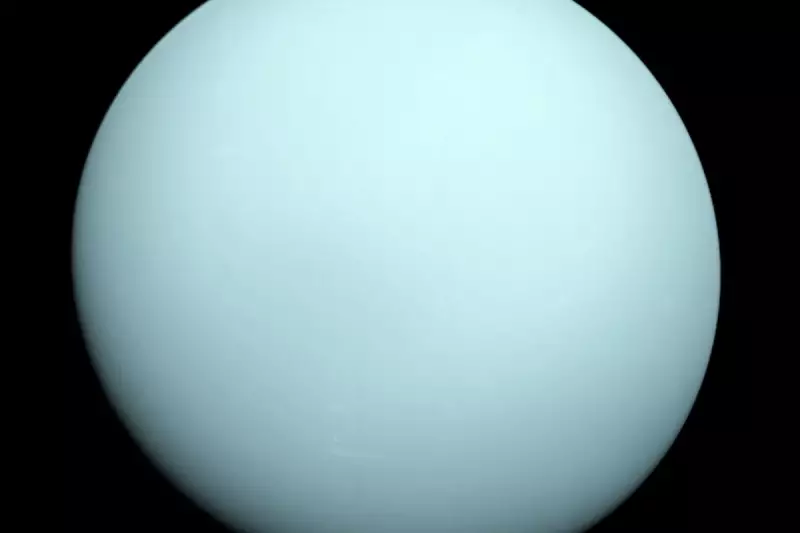
In a remarkable deep-space detective story, NASA researchers have unearthed tantalising evidence suggesting the existence of a previously undocumented moon orbiting the icy planet Uranus. The potential discovery, hidden within 37-year-old data from the Voyager 2 spacecraft, could fundamentally alter our understanding of the seventh planet's complex lunar system.
A Ghost in the Data Archives
The breakthrough emerged not from new observations but from sophisticated re-analysis of radiation and particle data collected during Voyager 2's historic 1986 flyby. Scientists at NASA's Goddard Space Flight Centre detected a curious dip in the intensity of charged particles—a signature typically caused by a celestial body sweeping material from its path.
"This pattern we see is classic moon behaviour," explained the research team. "Something appears to be creating a discernible drag effect on the planet's energetic particle environment, and a previously unknown moon is the most plausible explanation."
The Elusive Ice Giant's Growing Family
If confirmed, this mysterious object would become the 28th known natural satellite of Uranus, joining a diverse family of moons with names drawn from Shakespearean characters and Alexander Pope's literary works. Unlike the planet's five major moons, this potential addition likely measures merely a few miles across—placing it among Uranus's smaller, irregular satellites.
The suspected moon appears to orbit approximately 5,000 miles from Mab, one of Uranus's previously known moons, and may share similar characteristics with its neighbouring celestial bodies.
Challenges of Confirmation
Verifying the moon's existence presents significant challenges for contemporary astronomers. The immense distance to Uranus—nearly 3 billion kilometres from Earth—makes direct observation extraordinarily difficult with current technology.
Researchers now hope that both the James Webb Space Telescope and future dedicated missions to the ice giants might eventually provide the visual confirmation needed to officially add this new member to our solar system's family.
A Legacy of Discovery Continues
This potential finding underscores the enduring scientific value of the Voyager missions, which continue yielding discoveries nearly half a century after their launches. As Voyager 2 continues its journey into interstellar space, its decades-old data still holds secrets waiting to be uncovered by persistent researchers armed with new analytical techniques.
The discovery reminds us that even in our own cosmic backyard, mysteries remain waiting to be solved, demonstrating that sometimes the most profound revelations come from looking anew at what we've already seen.




